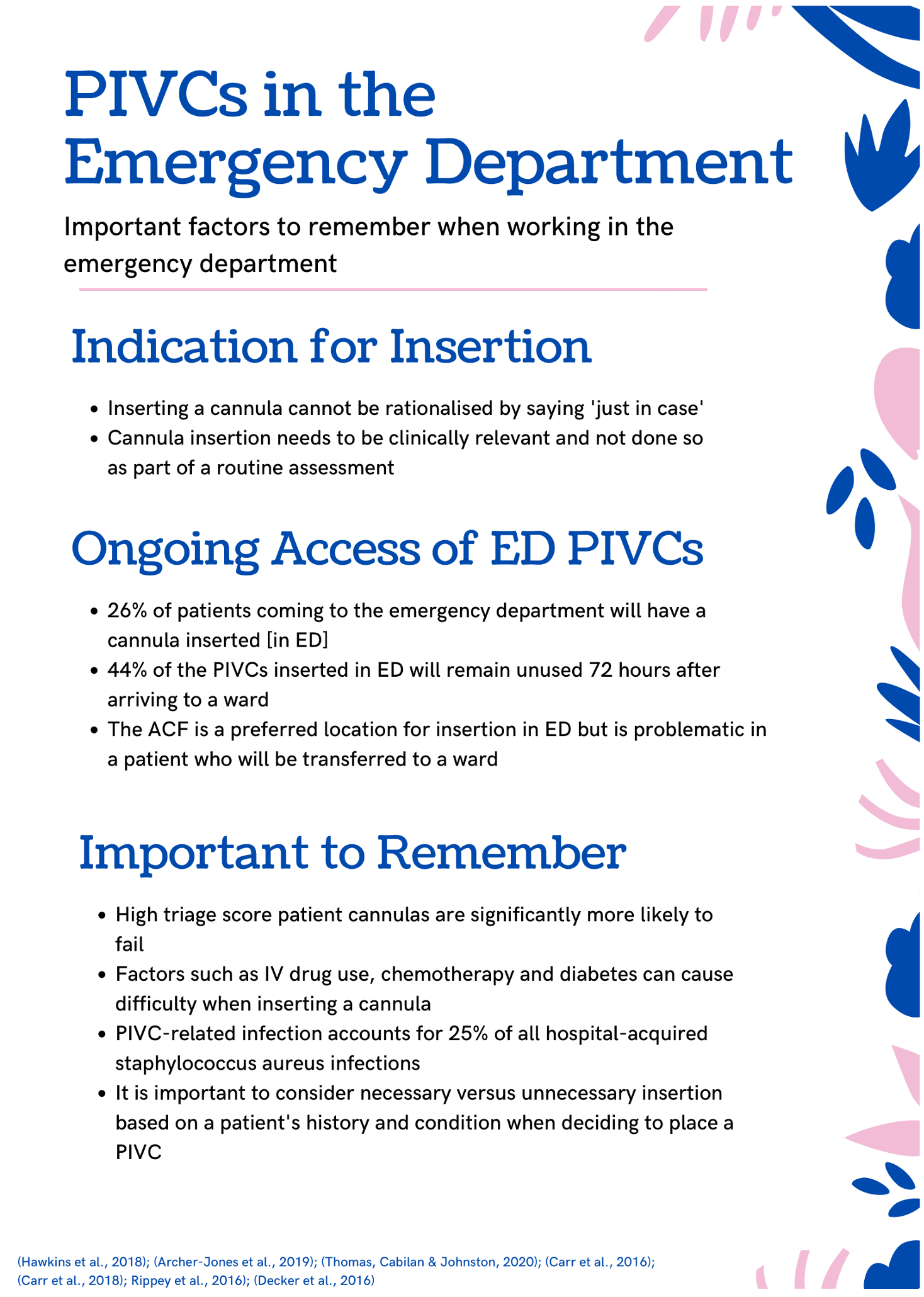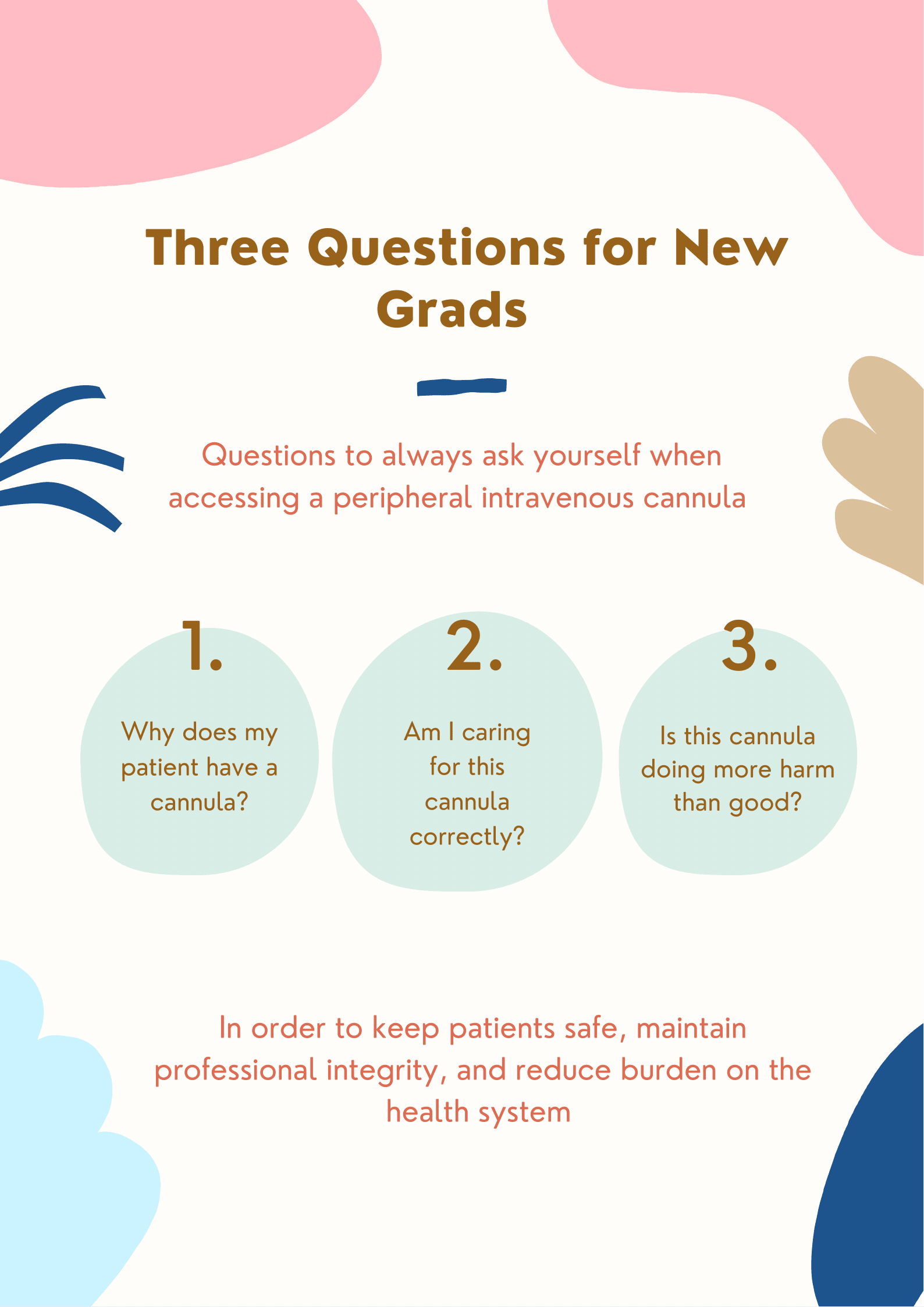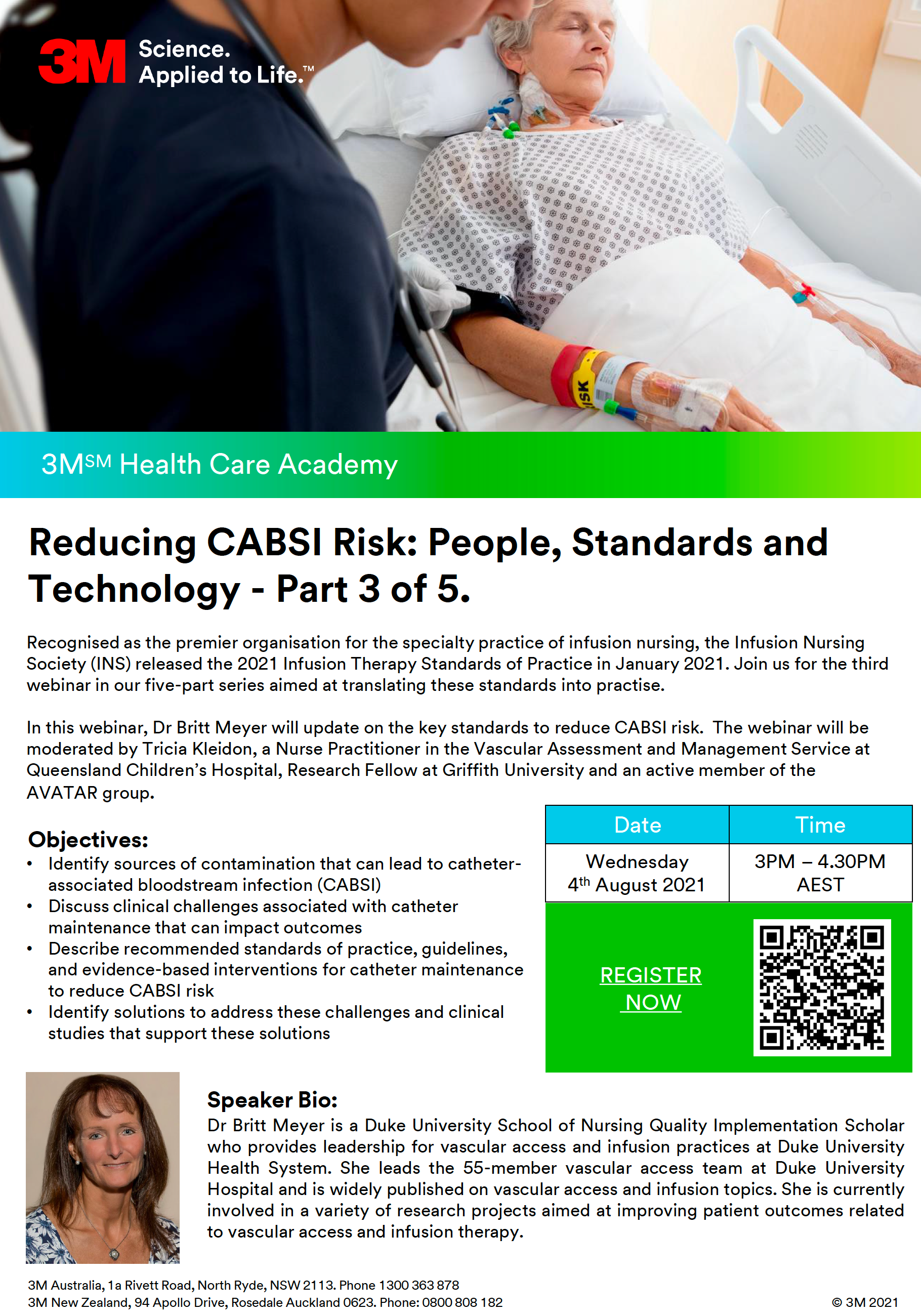Tips for PIVC Location and Size
Posted by Lizzy Ostwald
on 19 August 2021
Of the 11 million Australians accessing care in a hospital each year, an estimated 7.7 million will receive a peripheral intravenous catheter (PIVC), also called a cannula, meaning this procedure is commonplace, particularly in the emergency department.(1) Although this is such a common procedure, first-attempt failure rates are high, with an estimated 40% failure rate in adults and 65% in the paediatric population.(1)
All clinicians who are cannulation competent must be abl...
| Posted in:peripheral intravenous cathetercannulapatient experienceIV insertionvessel health |
Why catheter-to-vein ratio matters!
Posted by Gillian Ray-Barruel
on 19 August 2021
Did you know that certain catheter-to-vein (CVR) ratios can have twice the risk of thrombosis in patients with cancer?
Dr Rebecca Sharp from the University of South Australia (UniSA) and Australian Vascular Access Society has published a study in BMJ Open that analysed the outcomes of more than 2400 patients from 4 hospitals in Australia and New Zealand who received a peripherally inserted central catheter (PICC). The study found that up to 6% of patients with cancer who had received chemo...
| Posted in:catheter failurecentral vascular access devicesPICCultrasoundevidence-based practice |
Making it stick! A recap of VAD securement
Posted by Lizzy Ostwald
on 26 July 2021
Being aware of appropriate securement techniques is essential when caring for a vascular access device (VAD). Whether arterial or venous, when a VAD dislodges, it becomes useless, which can lead to delayed treatment and prolonged hospital admission.1 As such, clinicians need to understand the importance of securement techniques that can prevent dislodgement and the subsequent possible complications.2
Suture-less securement devices are commonplace in hospital settings, seen most commonly i...
| Posted in:dressingsIV managementsecurementvascular access devices |
3M Health Care Academy - The 2021 INS Infusion Therapy Standards of Practice: Reducing CABSI Risk: People, Standards and Technology
Posted
on 19 July 2021
| Posted in:infection preventionIV managementvascular access devicesguidelinesevidence-based practicecatheter-associated bloodstream infection |
PIVCs in the Emergency Department
Posted by Lizzy Ostwald
on 15 July 2021
)
The emergency department is a fast-paced, hectic and often unpredictable environment. In the 2019-2020 financial year, Australian EDs treated 8,236,159 patients, reviewing an average of 22,600 patients per day (1). Often working under duress and having to make clinical decisions within a very narrow timeframe, ED clinicians must quickly identify what a critically unwell patient needs in order to be stabilised (2,3).
Achieving vascular access usually means urgent insertion of a peripheral ...
| Posted in:peripheral intravenous catheterinfection preventioninsertionvascular access devices |
Can I draw blood from a PIVC?
Posted by Lizzy Ostwald
on 7 July 2021
)
Drawing blood from a cannula is a routine practice in some clinical environments. But is this best practice or will the blood become too haemolysed to provide accurate results?
Drawing blood from a peripheral intravenous catheter/cannula (PIVC) is a routine practice in clinical environments such as the emergency department, rationalised as one less invasive test that a patient is subjected to. A PIVC should never be inserted just to draw blood or 'just in case' it's needed late...
| Posted in:peripheral intravenous catheterblood samplingvenepuncture |
Preventing IV complications podcast
Posted by Gillian Ray-Barruel
on 5 July 2021
Those who know me understand how passionate I am about PIVC care!
In this Osler podcast, Dr Todd Fraser and I discuss best practice of PIVC insertion and maintenance, with essential tips for infection prevention and good cannula assessment and management.
If you like this podcast, I encourage you to check out the Osler website and download the free My Osler app. They have lots of excellent education podcasts and learning modules for all kinds of healthcare professionals. ...
| Posted in:peripheral intravenous catheterdressingseducationinfection preventionsecurement |
Free medical education website and app
Posted by Dr Todd Fraser
on 3 July 2021
)
Are you a medical student, junior doctor, paramedic or advanced practice nurse wanting to brush up on your medical knowledge?
Osler is a platform designed to support medical students and junior doctors transition to life on the wards, as well as any healthcare clinicians who strive for excellence by ensuring they are best prepared to care for their patients.
Whether you're starting out as a student, or an expert in your field, whether you're a nurse, a doctor, allied health or p...
| Posted in:educationpatient safety |
PIVC Essentials: Three Tips for New Grads
Posted by Lizzy Ostwald
on 28 June 2021
)
"Hi, I'm Lizzy, and I'm in my final semester of a dual bachelors of nursing and midwifery, and am fortunate to be undertaking a Winter Research program with the AVATAR group. I have decided to focus on tips for a new grad as my first topic as I am going to be a grad at the start of next year, and I believe that a lot of benefit can be gained from easy access to summarised, accurate information."
Coming into the hospital setting as a graduate nurse, or 'grad...
| Posted in:peripheral intravenous cathetercannulaIV managementevidence-based practice |
Vascular Access - Call for Papers!
Posted by Gillian Ray-Barruel
on 17 June 2021
The Australian Vascular Access Society (AVAS) is an association of healthcare professionals founded to promote the vascular access specialty (http://avas.org.au/). Our multidisciplinary membership strives to advance vascular access research, promotes professional and public education to shape practice and enhance patient outcomes, and partners with industry to develop evidence-based innovations in vascular access.
The electronic journal Vascular Access is the official publication of AV...
| Posted in:vascular access devices |









